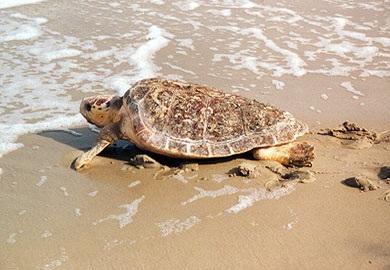
Caption
Loggerhead sea turtles nest on Georgia beaches in the summer, at the same time when the Army Corps of Engineers wants to dredge near Brunswick.
Credit: South Carolina DNR
A judge ruled that dredging during the spring and summer would pose too great a threat to nesting sea turtles.

Loggerhead sea turtles nest on Georgia beaches in the summer, at the same time when the Army Corps of Engineers wants to dredge near Brunswick.
A judge has blocked the Army Corps of Engineers from dredging this spring in the Brunswick area because of the threat to nesting sea turtles.
Environmental group One Hundred Miles sued to stop the Corps from beginning maintenance dredging this month. The suit argued the Corps had failed to conduct the necessary environmental review, which the agency conceded it had not.
This dredging typically happens in the winter to avoid disturbing nesting sea turtles, a fact that United States District Judge R. Stan Baker brought up in his decision.
“Indeed, perhaps the best evidence that summer hopper dredging will irreparably harm plaintiffs’ interests is the Corps’s own 30-some-odd-year practice of not dredging outside of the winter months,” he said before announcing the injunction.
Baker said the parties will next need to meet for a status conference regarding the lawsuit in the coming weeks.
The Corps was proposing to change its dredging routine under a new guidance from the National Marine Fisheries Service, which officials said had been in the works for over a decade.
Corps officials said they wanted to dredge now to avoid the North Atlantic right whale calving season, which runs from mid-November into April. The whales are critically endangered, with fewer than 400 remaining.
But there have been no confirmed cases of this dredging work harming whales.
There are many cases of dredges killing sea turtles. In testimony Thursday, Department of Natural Resources wildlife biologist Mark Dodd said that hopper dredges like those the Corps planned to use often cut sea turtles into pieces.
Sea turtles nest on the beaches of Georgia and other southeastern states from May through mid-August, with hatchlings emerging into October.